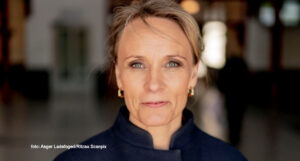Saxo Bank har udarbejdet tre scenarier for virkningen af corona-virussen med forslag til, hvordan investorer kan forholde sig. Banken tror ikke, at centralbankerne vil have en stor virkning.
Uddrag fra Saxo Bank:
Summary: Markets are demanding a policy response from central bankers and after the carnage in markets last week, one has been rapidly priced into the forward curve and is likely on the way. But traditional central bank medicine does little good for an economy in the throes of a basic shutdown in real activity. Here we consider three scenarios on how things can unfold from here in the wake of the coronavirus outbreak.
Below we present three cases for how this situation could develop from here, from best case to worst case scenarios. It could well be that none of the three scenarios obtains in the way described, so please note that this is our back-of-the-envelope sketch of potential outcomes that is designed to spark thought and debate on how this could shape up from here, not a forecast! Given that responsible and sober epidemiologists have indicated that up to 40-70% of humanity could end up with this illness, it is worth a full exploration of what that could mean.
Regardless how things turn out there are two imperatives as we navigate the coming weeks and months of the coronavirus fallout on our lives and our portfolios – remaining safe in terms of leverage and remaining liquid when and if the market experiences a significant crisis point or drawdown because this is the time when the market presents the greatest trading opportunities. There is a reason that the 89-year old Warren Buffet had record cash levels recently.
Scenario 1: the best case – a delayed V-shape
The best case scenario still involves a global technical recession and a significant further disruption in Q2 and Q3, but it becomes clear during this period that quarantine efforts are sufficiently slowing the progress of the outbreak that it will eventually turn the corner. Meanwhile, massive rate cuts and tremendous fiscal stimulus (and most importantly, vast credit forbearance programs) begin to work through the system and generate expectations of a massive V-shaped rebound later this year. One key development that could bring forward a V-shaped scenario is the announcement of a successful vaccine that could ramp up to full production inside of a few months – though we have no ability to assess the odds of this development.
Trading the best case scenario:
- Long volatility (S&P puts – looking for 2500 test, USDJPY puts (for test below 100), short credit (JNK and HYG ETFs) but looking to take profit during Q2
- Staying long 20% precious metals
- Rotating into pro-cyclical commodities and beaten down mining and energy stocks in Q2 and Q3 slowly
- Long safe haven treasuries, but easing up on allocation as US 10-year yields approach zero.
- Easing into long risk trades (long S&P calls, etc…) when market is making new lows but implied volatility is declining (divergence).
- Transitioning from 50% long during phase when market is suffering badly and sentiment is poor to a full long risk stance only when the news on the coronavirus and market have clearly turned.
- Short US dollar as a basket trade (vs. EM and DM FX) once market sentiment/news has turned more positive
Scenario 2: the base case – a U-shaped recovery
The base case is that officially directed quarantining and self-quarantining in the form of decisions not to take holidays or generally reduce public activity means a sharp recession unlike anything we have seen since the Great Recession. And despite heroic stimulus efforts, real activity on the ground is slow to resume as episodes of reinfection keep significant disruptions and quarantining policy and behaviors in place. However, once the comeback manifests in this scenario, the swing from deflationary fears to more inflationary outcomes could prove far more profound than in the “best case” because in this case, significant supply destruction occurs in energy and other sectors because of a credit crunch during Q2 and Q3, such that when a rebound arrives, demand and liquidity spike prices as supply struggles to catch up.
For deleveraging phase:
- Long puts on Nasdaq 100 and S&P 500 – base case for test of 200-week moving average in S&P 500 around 2650 – same for Nasdaq 100 is 6531.
- Long 20% precious metals for the duration – benefits as safe haven and then as inflation hedge
- Long JPY via USDJPY puts and short EM vs. JPY
Once deleveraging phase is mature:
- Picking up EM at distressed valuations and after central banks have hiked to defend their currencies
- Picking up commodity-linked (mining and energy) at distressed levels
- Long cyclical consumer equities for a trade(consumption rebound on pent-up demand!)
- Increasing silver allocation (dual use metal)
- Rotation into value equity plays for longer term investment as value makes a comeback in a rising inflation environment. see Peter Garnry and Eleanor Creagh posts on commodity- and other equities perspectives for more
- Increase short USD exposure as a basket.
Scenario 3: the worst case – an L-shaped recovery
We really don’t want to go there, but the worst case is one in which global GDP goes into an unprecedented slump not seen since the Great Depression of the 1930’s as the global spread of the coronavirus makes it difficult to lift quarantine efforts as reinfection fears continue from the virus having spread worldwide and meaning that opening up for business as usual generates renewed outbreak fears. The devastation continues to unfold as initial central bank and fiscal pushes don’t reach SME businesses, who are forced to fold and cease operations as their credit lines dry up. The usual self-reinforcing behavior sets in and aggravates the downturn as acquaintances and coworkers losing their jobs leads to a further shutdown in economic activity. The signs of recovery don’t fully emerge until well into 2021.
For deleveraging phase:
- Stay long fixed income as US 10-year yields go to negative 0.50%
- Long tiny-delta puts on the stock market (S&P 500 at below 2400, for example)
- Short credit (JNK and HYG)
- Long JPY
- Stay long 20% precious metals for the duration
Once deleveraging phase is mature
- As market pessimism goes into full swing, increase long exposure to sectors and instruments that will benefit from even more extreme stimulus efforts that will eventually trigger a comeback – in prices if less so in real GDP. Atop the list is short the US dollar – versus riskier currencies in DM to begin with but increasingly against hard assets as well. Recall that one of the steepest equity market rallies in history came in 1932-33 as FDR finally shook up the market with devaluation of the USD against gold.
- Increase allocation to silver (dual use as industrial/precious metal).
- Only rotate into long commodity sensitive FX and (RUB, BRL, CLP, for example), and commodity-sensitivity equities very slowly and only once supply is drying up more quickly than demand as operations are shuttered in for example, oil and industrial metals mining stocks – see Peter Garnry and Eleanor Creagh posts on commodity- and other equities perspectives for more.














